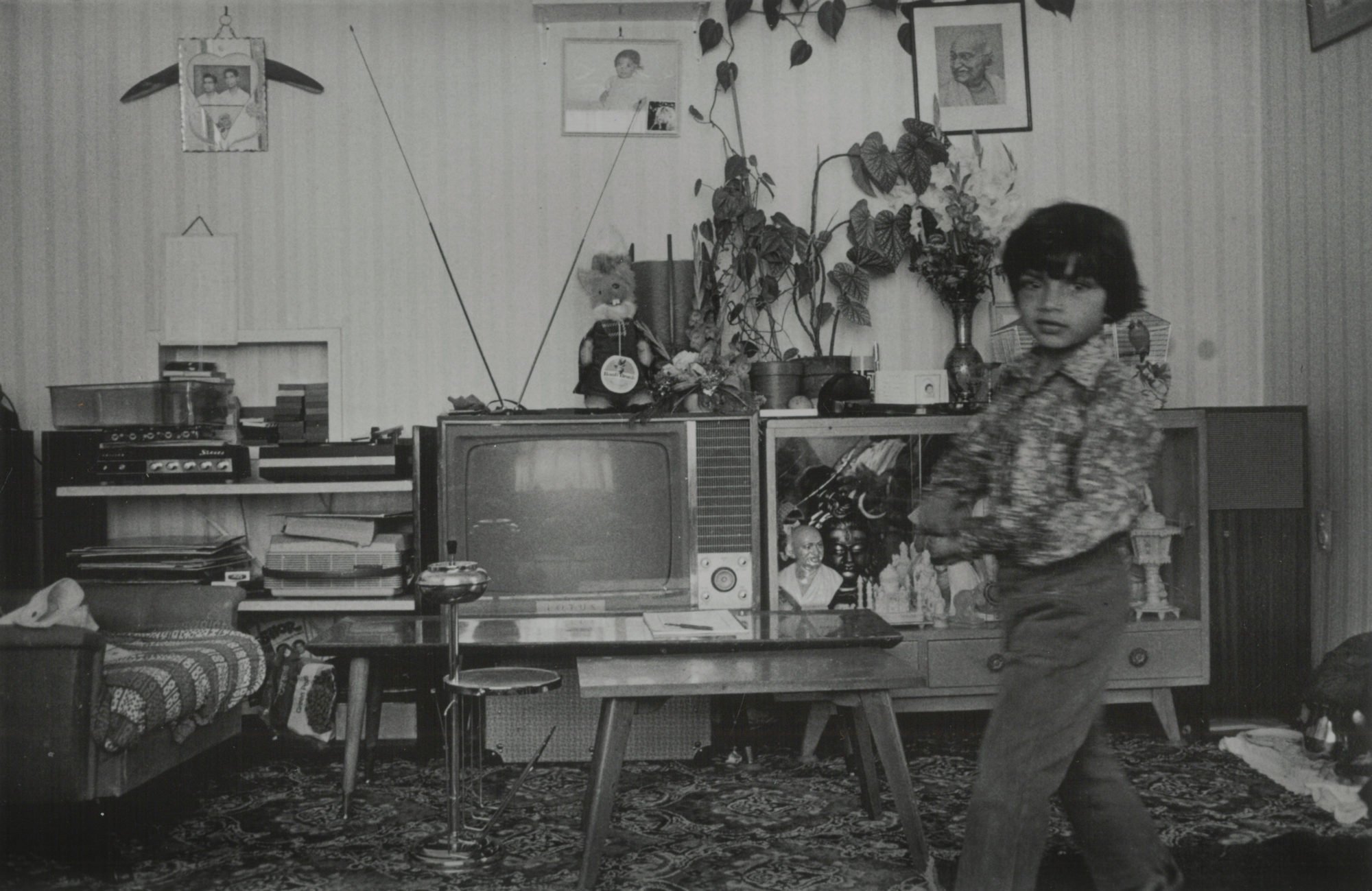The House is Full
The House is Full
Emily Karaka , Parbhu Makan, John Miller, Teuane Tibbo
Curated by Dilohana Lekamge
Te Tuhi Contemporary Art Trust
13 Reeves Road, Pakuranga,
Tāmaki Makaurau Auckland
12 June - 04 September 2022
Parbhu Makan, Chandu’s Wellington, Parbhu mama’s place, 70’s
The house is full is an exhibition which considers artistic practices that could be considered on the fringes of anti-establishment art movements in Aotearoa from the 1970s onwards. Each of the artists’ ancestral homes was not Britain and explored different roots in this particular era of cultural transformation.
Prior to this decade, the belief amongst New Zealanders was that they were part of a broader British identity, albeit geographically located in the South Pacific. The 1970s was a historically heightened time of cultural rigidity in Aotearoa, marked by many Māori land protests including lesser-covered disputes like that of Ngāti Hine Forestry dispute, the Dawn Raids and the country’s racially charged immigration policies, which made it difficult for people from specific cultural groups to move to Aotearoa if they seemed unlikely to easily assimilate into New Zealand culture. These disruptive forces prompted an urgency to challenge anglocentric structures of power, which of course included a drive to confront those same structures which formed the values of our national artistic landscape.
Various figures in Aotearoa’s art scene rejected the values of the traditional art establishment, making way for more experimental practices, many of which were sitting in solidarity with those most greatly affected by political upheaval. Artists are recognised for acting in solidarity with modes of resistance to dominant forces, and artists such as Colin McCahon have been recognised for their alignment with values of cultural inclusivity and equality. However, more attention needs to be given to artists that were closely affected by these punitive political shifts. The house is full showcases four artists: Emily Karaka, Parbhu Makan, John Miller and Teuane Tibbo, all of whom were more direct targets of punitive political shifts and who contributed significantly to these artistic movements. Their visions of home were not of Britain, but of a home in Aotearoa and homes that were elsewhere.
We need your help to continue providing a year-round programme of online reviews, interviews, portfolios, videos and listings that is free for everyone to access. We’d also like to dream bigger with the services we offer to photographers and the visual arts.
We’ve partnered with Press Patron to give readers the opportunity to support PhotoForum Online.
Every donation helps.

